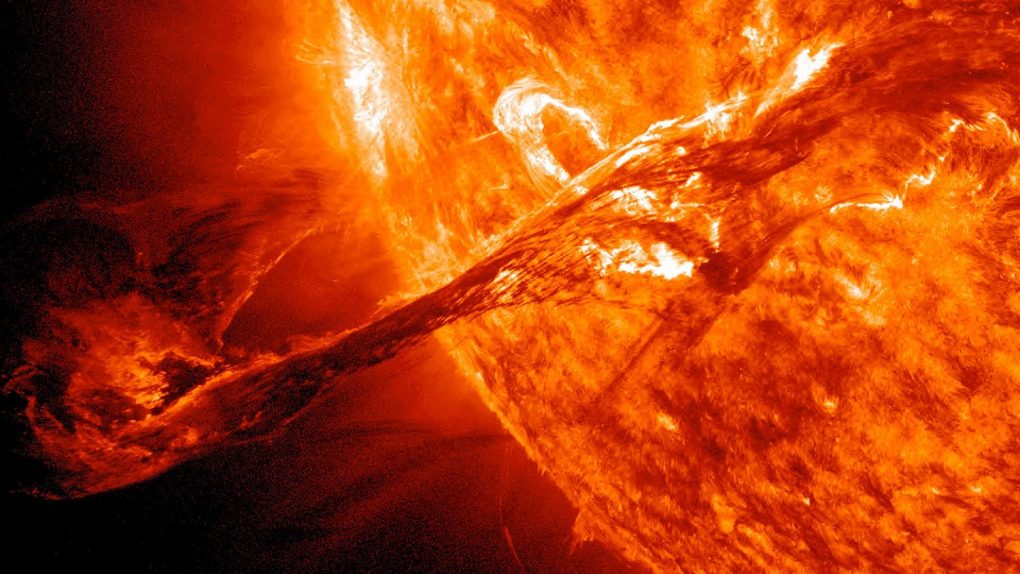The Sun is pretty important to life as we know it. After all, we wouldn’t be here without it, but it also gives us a headache every once in a while. Astronomers captured a glimpse of a large solar flare a few days ago which produced a CME, or coronal mass ejection, and it’s expected to hit Earth today as a solar storm.
When a coronal mass ejection takes place, the Sun spits a mass of plasma and electromagnetic radiation into space. When it happens to toss that material in the direction of Earth, we experience solar storms here on Earth a few days later. Thankfully, the CME that occurred earlier this week was relatively minor, and it’s not expected to have any dire effect on us, but that doesn’t mean we won’t notice it.
Why are we under a G1 Watch the next two days? Because of this solar storm seen here in this GIF. The Sun unleashed a long duration C class flare that also produced a coronal mass ejection (CME) towards Earth. Send all of your Aurora reports to @TweetAurora #CitizenScience pic.twitter.com/VCO1Z6857g
— Frank Lucas (@SpaceWxMike) February 14, 2018
As it always does when it reaches Earth, the magnetized material the Sun spat out will interact with Earth’s own magnetic field. This often results in auroras (aka “Northern Lights”) which are significantly brighter than normal, but particularly large CMEs can be a hazard for astronauts as well as spacecraft and satellites. In some cases, massive solar storms have actually temporarily knocked out power grids on the Earth’s surface.
This time around, the solar storm is expected to be fairly small, and will likely produce some brighter-than-average auroras. On the geomagnetic storm scale, which ranks space storms from G1 (lowest) to G5 (highest), it’s expected to be a G1. According to the National Oceanic and Atmospheric Administration, G1 storms can have a mild effect on migratory animals such as whales, minor impact to satellite operations, and has a chance to produce “weak power grid fluctuations.”
In short, the Sun cut us a break this time around, but it definitely likes to remind us that it’s there.








